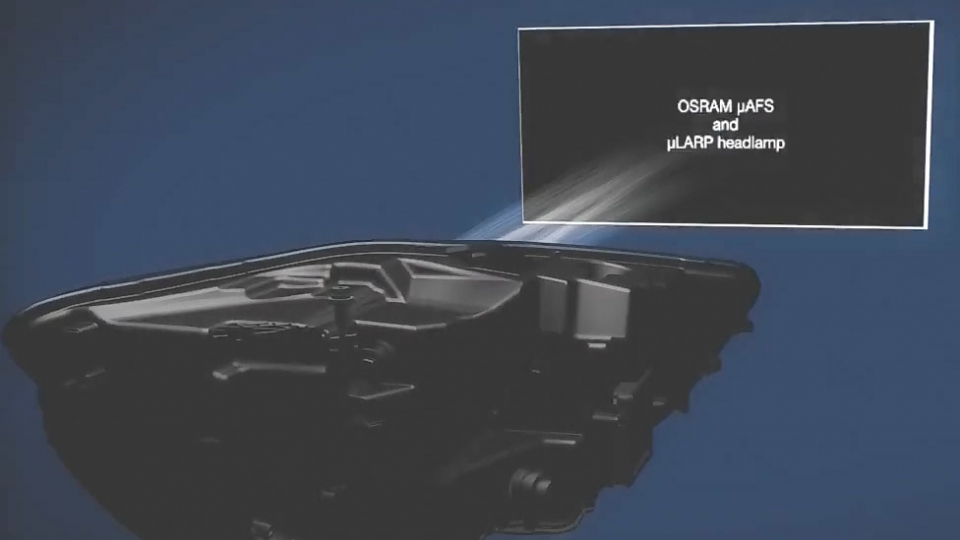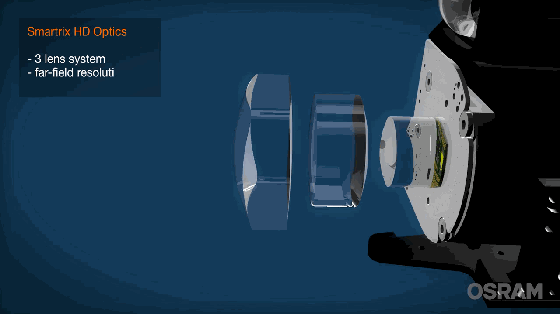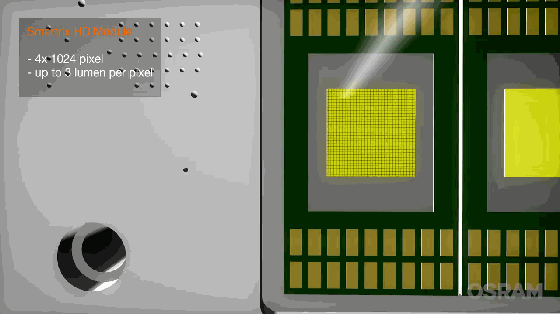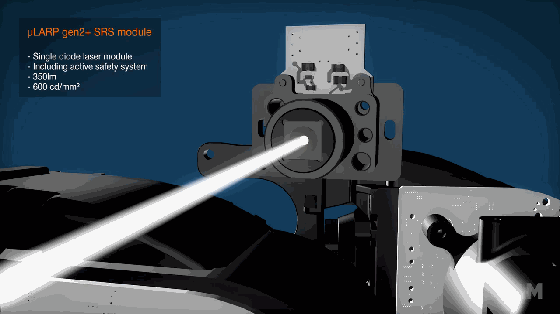
Osram Innovative Headlight Optimum Light Conditions at All Times without Dazzling
After a completed R&D project with the Fraunhofer Institute for Reliability and Microintegration, Infineon, Hella, and Daimler, Osram is demonstrating a prototype of an LED headlamp hybrid module with more than 1000 pixels and integrated driver electronics.
Just a month ago, the company announced a module that combined multiple LED segments or pixels and a silicone optic to enable auto makers to use the technology in mainstream vehicles. Typically, the technology works with camera assistance to sense oncoming traffic and changes in the road topography to alter beam direction, eliminating glare for oncoming drivers and providing the driver of the auto with the adaptive headlamps to better view the roadway.
Still, the Eviyos LED headlamp project takes beam control to another level with the ability of the electronics to independently control 1024 individual emitters or pixels as opposed to controlling three to a dozen groups of emitters that form larger pixels or segments. The key to the granularity is the integration of driver electronics and intelligence in the module.




Individually adaptable smart pixel headlights for optimum light conditions
Both headlights contain three LED light sources, each with 1,024 individually controllable light points (pixels). This means that the headlight can be adapted very precisely to suit the respective traffic situation to ensure optimum light conditions at all times without dazzling other drivers.
The light can be adapted to take account of every conceivable bend in the road so that there are no dark peripheral areas. In addition, with the aid of sensors in the vehicle, the surroundings can be analyzed in order to illuminate oncoming traffic. This allows the driver to see these vehicles more clearly. At the same time, the beam of light does not shine on the heads of oncoming drivers, which means they’re not dazzled. As a result, such shifting headlights no longer have to be dimmed on country roads.

In the new approach, electronic activation of the LED is integrated in the chip, resulting in a much higher resolution, while still meeting limited space requirements. The LED module features an electrical and thermal interface that enables direct connection to the vehicle’s electronics.
